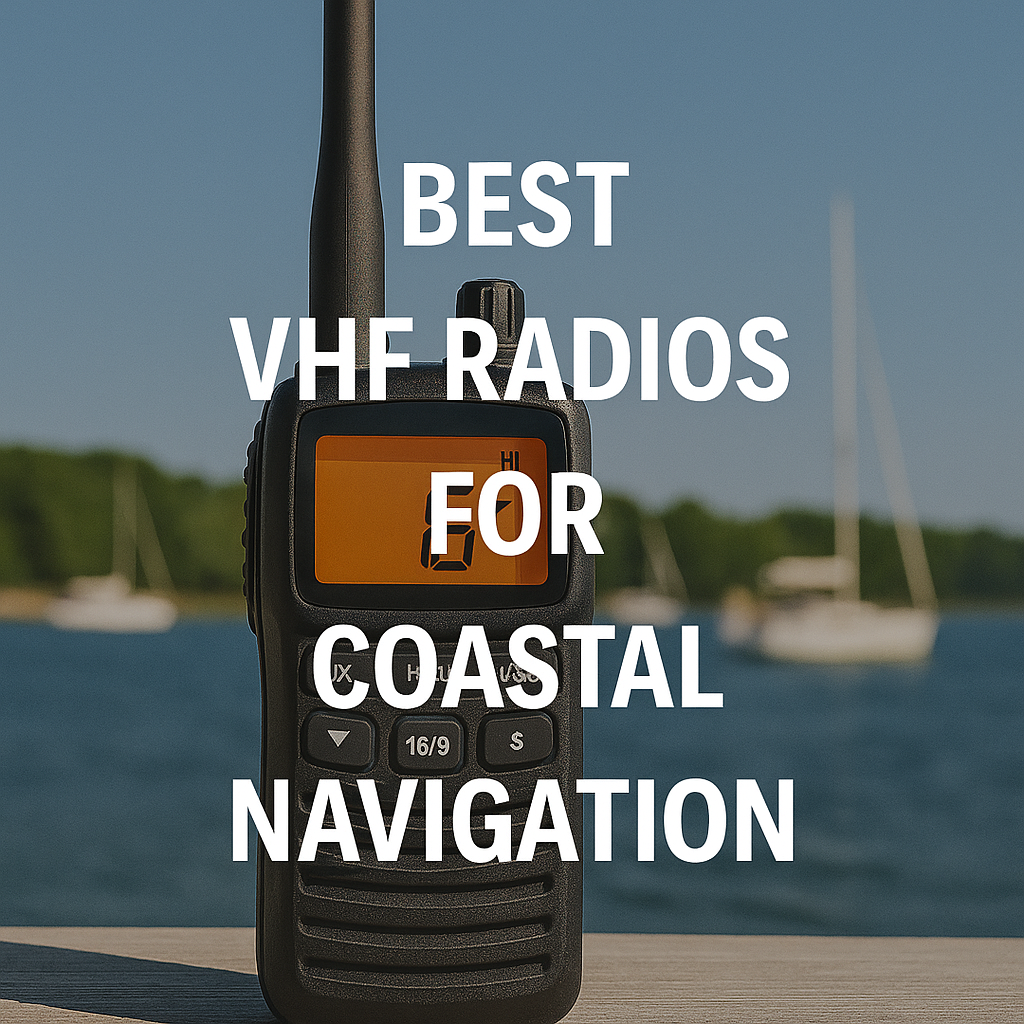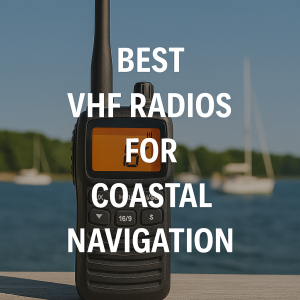Looking for the best VHF radios for coastal navigation in 2025? Explore expert reviews, real-world tests, and must-know features in this comprehensive guide for global boaters.”
Whether you’re sailing off the coast of Nova Scotia, fishing near Australia’s Gold Coast, or cruising along the Greek isles, one tool remains your lifeline on the water: the VHF marine radio.
More than just a communication device, a reliable VHF radio is your emergency beacon, your link to harbor masters, and your direct channel to other vessels in fog, storms, or crowded traffic lanes. In 2025, with global maritime safety protocols tightening and technology evolving, selecting the right VHF radio is a serious decision for coastal navigators—professionals and recreational mariners alike.
This guide dives deep into the best VHF radios available in 2025, comparing features, price, usability, and performance in real coastal conditions.
Why VHF Radios Still Matter in Modern Maritime Operations
Despite the rise of satellite communication and AIS integration, VHF radios remain the primary communication tool for coastal navigation—backed by IMO, U.S. Coast Guard, and Transport Canada as the first line of emergency communication within 20–30 nautical miles of the coast.
VHF Channel 16 is still the internationally designated distress and calling frequency. According to the Maritime and Coastguard Agency (UK), over 80% of emergency responses in UK waters in 2024 were initiated via VHF calls—not satellite phones or mobile apps.
“VHF is simple, direct, and universally understood by every coast station and vessel,” — The Nautical Institute, 2024 Training Bulletin
Key Technologies and Features Shaping VHF Radios in 2025
What’s New in This Year’s VHF Devices?
From voice clarity to integrated GPS, here’s what’s trending in 2025:
1. Built-in GPS & DSC (Digital Selective Calling)
Almost all mid- to high-end VHF radios now come with GPS and DSC. This allows you to send an automatic distress call with your exact location at the press of a button.
2. AIS Receiver Integration
Some models now include Automatic Identification System (AIS) receivers, letting you track nearby vessel movements—especially useful in congested ports.
3. Bluetooth Connectivity
Allows hands-free calling and integration with onboard intercom systems—helpful on sailboats and motor yachts alike.
4. Waterproof Ratings (IPX7 and IPX8)
With sudden splashes or downpours, waterproofing is critical. Most modern sets meet IPX7 standards (submersible up to 1m for 30 minutes).
5. Rewind and Record Features
Missed a call? High-end units now allow playback of the last received transmissions—a game-changer in noisy weather.
6. Multi-Watch Functions
New dual- and triple-watch modes help you monitor several channels at once, including distress and working channels.
–
Best VHF Radios for Coastal Navigation: 2025 Picks
Top Fixed-Mount VHF Radios
1. Icom M510 with AIS
Rating: ★★★★★
Key Features: 25W power, Class D DSC, built-in AIS, Wi-Fi app control
Price: ~$800 CAD / ~$600 USD
Why It Stands Out: Icom’s flagship 2025 model offers seamless integration with smartphones and multifunction displays. It’s a favorite among offshore sailors and commercial operators.
2. Standard Horizon GX2400
Rating: ★★★★☆
Key Features: AIS/GPS built-in, 66-channel WAAS GPS receiver, NMEA 2000 compatible
Price: ~$650 CAD / ~$480 USD
Why It Stands Out: Crystal-clear audio, excellent menu system, and easy pairing with radar and plotters.
3. Raymarine Ray73
Rating: ★★★★☆
Key Features: DSC, GPS, optional second station mic, premium waterproofing
Price: ~$700 CAD / ~$520 USD
Why It Stands Out: Great build quality and ideal for Raymarine instrument users looking for a unified system.
–
Best Handheld VHF Radios for Coastal Navigation
1. Icom M94D
Rating: ★★★★★
Key Features: Built-in AIS + GPS, DSC, floating and flashing if dropped overboard
Price: ~$500 CAD / ~$375 USD
Why It Stands Out: It’s the only handheld VHF with AIS receive function in 2025. Great for dinghy sailors and day cruisers.
2. Standard Horizon HX890
Rating: ★★★★☆
Key Features: GPS, DSC, float + strobe, waypoint navigation
Price: ~$350 CAD / ~$270 USD
Why It Stands Out: Durable, reliable, and a favorite of the Canadian Coast Guard Auxiliary.
3. Cobra MR HH600
Rating: ★★★☆☆
Key Features: Bluetooth, GPS, DSC, Rewind-Say-Again
Price: ~$300 CAD / ~$225 USD
Why It Stands Out: Excellent for recreational users with Bluetooth call handling and intuitive controls.
–
Real-World Usage: Voices from the Coast
Case Study: Fisherman’s Experience in Nova Scotia
Gregory, a lobster fisherman based in Lunenburg, recounts a situation in October 2024 when fog rolled in rapidly during a coastal run:
“The GPS on my Icom M510 pinpointed my location perfectly. I made a quick DSC alert on Channel 70, and within five minutes, rescue was already tracking my signal. It wasn’t life or death, but without that radio, I’d have been guessing.”
Case Study: Charter Skipper in Croatia
Maria, who runs a charter catamaran in Split, relies on her Raymarine Ray73 paired with a handheld HX890:
“Clients aren’t always aware of safety gear, but I brief them every trip. The fixed radio connects with my entire NMEA 2000 system, while the handheld gives me mobility when docking or using the tender.”
–
Challenges and Solutions in Selecting a VHF Radio
Challenge 1 – VHF Channel Confusion for International Cruisers
Not all countries use the same channel lineup. Channel 22A (U.S.) is not used in Europe. Always select radios that allow ITU channel switching.
Challenge 2 – Interference and Battery Life in Handheld Units
While handhelds are versatile, they may struggle in heavy seas or steel-enclosed cabins. Solution: pair them with external antennas or dual-station configurations.
Challenge 3 – Compatibility with AIS and NMEA Networks
Ensure your chosen unit supports NMEA 0183 or 2000 protocols if you plan to integrate it with chartplotters or AIS transponders.
Future Outlook: Where Are VHF Radios Headed?
By 2030, many expect VHF radios to become part of fully integrated smart helm stations, combining voice, chart, radar, and collision avoidance in one interface.
IMO’s e-Navigation strategy continues to advocate for streamlined communication and automation, while companies like Furuno and Garmin are pushing hybrid VHF/AIS/chartplotter systems already in testing on pilot vessels.
FAQ: VHF Radios for Coastal Navigation
1. Is a VHF radio required by law for boating?
In many countries—including Canada, the UK, and Australia—carrying a VHF radio is strongly recommended and sometimes required for boats over a certain size.
2. What’s the difference between Class D and Class A DSC?
Class D is standard for recreational use. Class A is for SOLAS-compliant vessels and offers more robust functionality, including dual watch and AIS interfacing.
3. Do I need a license to operate a VHF radio?
Yes, in Canada and many other countries. The ROC(M) (Restricted Operator Certificate – Maritime) is required.
4. Can I use a handheld VHF as my only radio?
Yes, for small boats close to shore. However, it’s recommended to have a fixed-mount radio for range and power.
5. How far does a VHF radio reach?
Typically 5–25 nautical miles depending on height and antenna power.
6. What’s the benefit of GPS in a VHF radio?
It allows automatic location transmission during distress calls, improving response speed dramatically.
7. How do I test my VHF radio?
Use the radio check function on local marine channels (usually not Channel 16), or use Digital Selective Calling (DSC) test features where available.
Conclusion: Navigate with Confidence, Communicate with Clarity
In 2025, choosing the best VHF radio for coastal navigation isn’t just about ticking a safety checklist—it’s about selecting a device that integrates with your boat, responds when you need it most, and keeps you legally and operationally sound.
Whether you’re a weekend sailor, a coastal fisher, or an international cruiser, there’s a VHF radio built to fit your needs and budget. Invest wisely, register your MMSI, and keep your radio checked and charged—because when the unexpected happens at sea, your VHF is your voice.
References
-
International Maritime Organization (IMO). (2024). e-Navigation Strategy Implementation Plan. https://www.imo.org
-
Maritime and Coastguard Agency (UK). (2024). VHF Marine Radio Handbook. https://www.gov.uk/government/publications/vhf-marine-radio-handbook
-
Canadian Power and Sail Squadrons (CPS-ECP). (2025). VHF/DSC Course Information. https://www.cps-ecp.ca
-
Transport Canada. (2024). Marine Radio Guidelines. https://tc.canada.ca
-
Standard Horizon. (2025). Product Specifications and Manuals. https://www.standardhorizon.com
-
Icom America. (2025). Marine Communication Devices. https://www.icomamerica.com
-
Raymarine. (2025). Integrated VHF Solutions. https://www.raymarine.com
-
CLIA. (2024). Communications and Safety Tech in Cruise Operations. https://www.cruising.org


